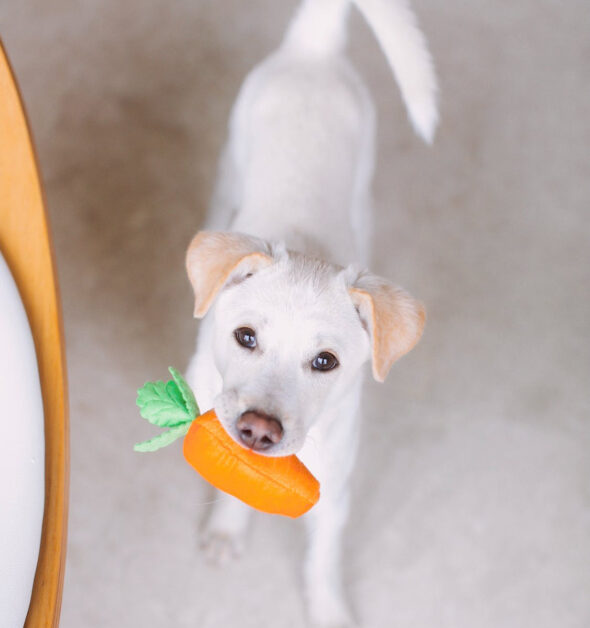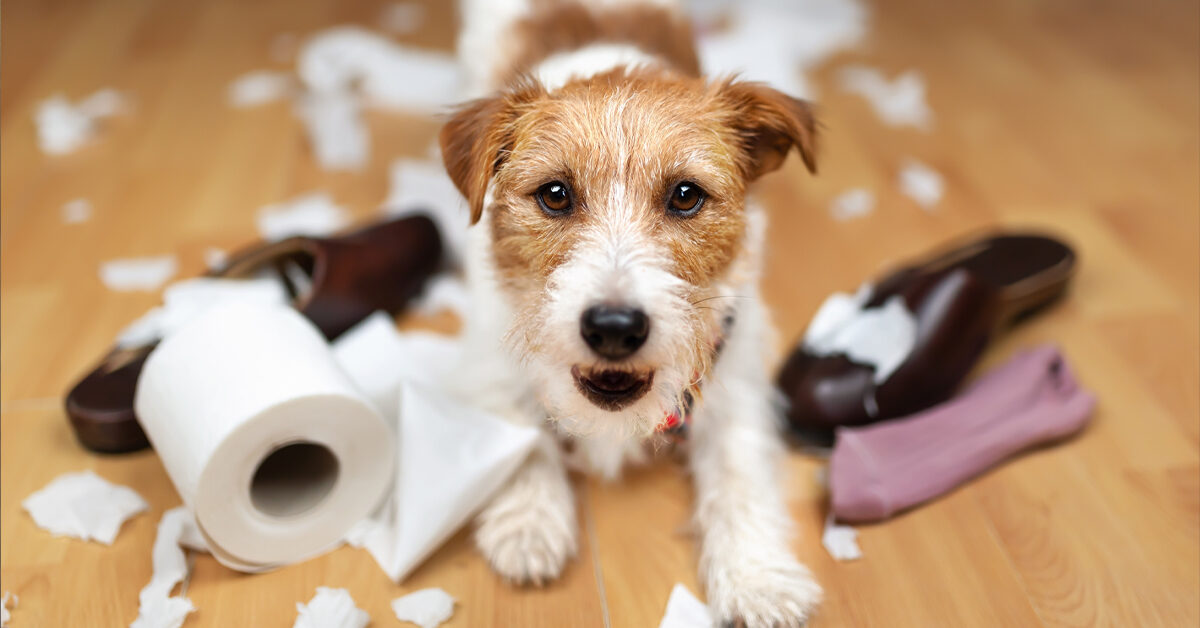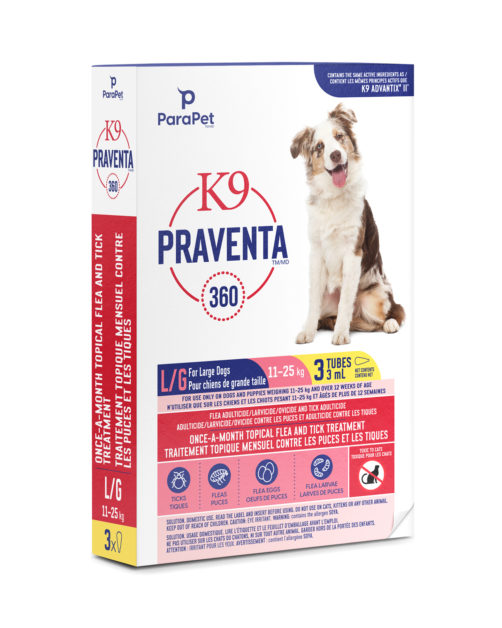Does your dog howl when you leave the house, even if it’s only for a few minutes? Do you come home from work only to discover your sofa’s throw pillows destroyed, their contents strewn all over the living room? Or you find your favourite pair of shoes chewed to bits? If so, then these could be signs that your dog may have separation anxiety, a common problem that many pet owners’ experience. What causes separation anxiety in dogs – and more importantly — how can you prevent it? Read on to find out.
What is Separation Anxiety?
Whether in a puppy or an adult dog, separation anxiety happens when a dog that’s extremely attached to their owner gets super-stressed when they’re left alone.
Separation anxiety in dogs can be considered as the equivalent of a panic attack in humans – sudden feelings of fear and stress resulting in extreme behaviour as part of a panic response. Essentially, the dog becomes terrified of being left alone.
Although the symptoms can vary, common signs of separation anxiety include:
- Anxiety when you start to get ready to leave (panting, hiding, trembling)
- Digging and scratching at doors or windows
- Destructive chewing
- Persistent howling, barking or whining
- Pacing constantly (either back and forth or in a circle)
- Desperate attempts to escape
- Urination and defecation (even though the dog is house-trained)
What Causes Separation Anxiety?
It’s not known exactly why some dogs suffer from separation anxiety while others don’t. However, because many more dogs adopted from shelters seem to have this behaviour problem compared to dogs raised by a single owner since puppyhood, it’s thought that the loss of an important person or group of people in a dog’s life can lead to separation anxiety.
Some types of situations that can trigger separation anxiety include:
- Change in residence (new home)
- Being left alone for the first time
- Being left alone when they’re used to being with people
- Suffering a traumatic event, such as a change in guardianship or family
- Change in the family’s routine or structure, or the loss of a family member or other pet
So, if your dog has a history of being abandoned by its previous owner and sees you leaving, he could fear it’s happening again. Similarly, if your pet’s previous owner moved or passed away, he could be worried that you’re leaving him too.
It’s important to remember that separation anxiety is more than just a sad whimper when you leave the house, or a bit of silly mischief while you’re away. Separation anxiety is a serious condition, the result of genuine stress, and because it’s misunderstood it’s one of the main reasons owners usually get frustrated with their dog and decide to give them up.
How to Treat Separation Anxiety
The best way to treat separation anxiety is by training your dog to feel comfortable being left alone.
If you realize your pet has separation anxiety, there are several tactics you can try that may help to reduce or resolve the problem, including desensitization and counter-conditioning techniques whereby you train you dog to actually look forward to you leaving the house. This is done by giving your pet a treat or special chew toy to play with just as you depart.

Start by leaving your dog alone for just 5 or 10 minutes at a time, gradually increasing the time away as your dog becomes more comfortable being by himself. Each time you leave, give your dog a treat or a toy. In the case of a toy remove it when you come home so that your dog only gets to play with that particular toy, when he’s by himself, to help him make the connection between getting the toy and you leaving. Soon your dog will come to associate you leaving with getting something interesting to play with or delicious to eat.
Other tips for lessening separation anxiety include:
- Creating little to no fuss when you leave the house to avoid increasing your dog’s stress levels. This means no dramatic goodbyes or extended leaving rituals.
- Getting your dog used to seeing you put on your coat or picking up your house keys, so it no longer acts as a trigger.
- Creating a comforting, confined safe space, such as a room packed with toys and with a window to look out of (and without anything of value that could be destroyed).
- Leaving a few pieces of recently worn clothes nearby to remind your dog of your comforting scent.
- Providing your dog with lots of exercise and mental stimulation before you leave the house. A tired, happy dog will be less stressed when you leave.
- Getting a dog sitter, or someone to check in on your dog, if you have to leave your dog home alone for long extended periods of time. Most dogs with separation anxiety are just worried about being alone, so they are comforted by having another human in the home.
However, it’s important to keep in mind that separation anxiety isn’t preventable in every case – just like humans, every dog is different. It’s also possible that even if your dog has never shown signs of separation anxiety previously, he could develop signs of it later in life, possibly triggered by a traumatic event.
What Won’t Help
- Punishment: Dogs with separation anxiety do not react well to being scolded or shouted at. Punishing a distressed dog for their behaviour is only likely to make things worse.
- Obedience training. While formal training is always a good idea, separation anxiety isn’t the result of disobedience or lack of training. Your dog isn’t being disobedient, just anxious and scared.
- Getting another dog: Getting your dog a companion usually doesn’t help an anxious dog because their anxiety is the result of their separation from you, not just the result of being alone.
- Crating. Unless your dog has been properly crate-trained to associate his crate as a comforting safe space, crating your dog won’t help. Your dog will still engage in anxiety responses inside a crate, and may urinate, defecate, howl, or even injure himself attempting to escape.
- Radio/TV noise. Leaving the radio or television on typically won’t help (unless the radio or TV is used as a safety cue), although if you’re going to use music, some studies have shown that soft rock and reggae can reduce stress and anxiety.




